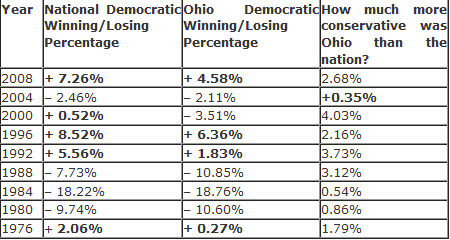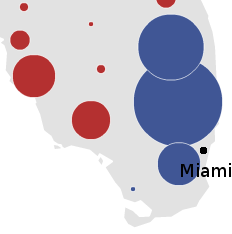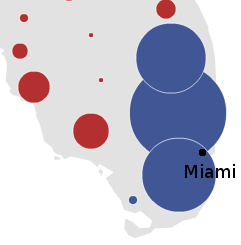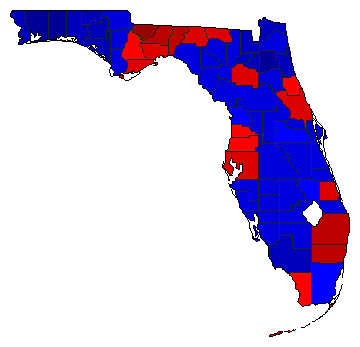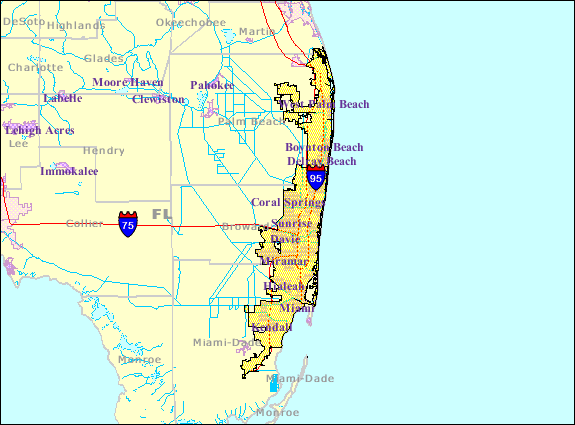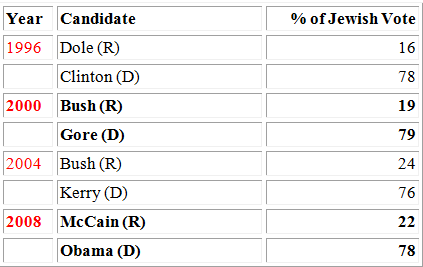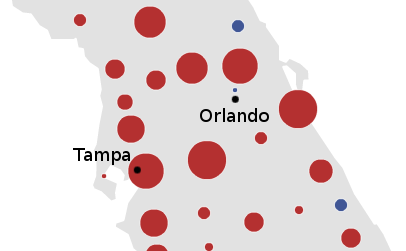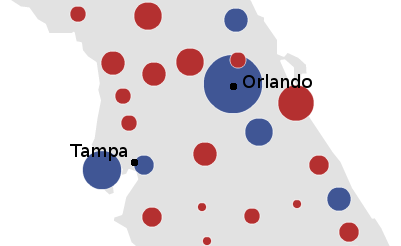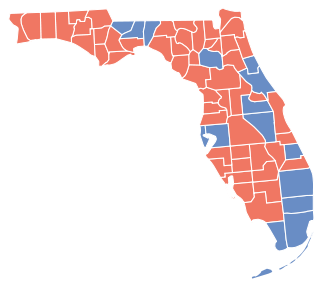By: Inoljt, http://thepolitikalblog.wordpr…
This is the second part of an analysis on the swing state Ohio.

Unlike Florida and Pennsylvania, Ohio cannot be easily divided into geographically distinct regions (although they do exist). Instead, I will be examining it through the lens of both partys’ strongholds in the state.
History
During the late eighteenth century Ohio was a consistently Republican state, the equivalent today of North Dakota or Arizona. Democrats often came close behind – four or five points – but never quite won the state until 1912. Their stronghold lay in a ring of rural counties populated by German immigrants (a pattern that has completely disappeared today). But this was never enough to overcome Republican strength everywhere else.
It was Franklin Roosevelt who changed this pattern forever. He laid the foundations of Ohio’s structural politics, which exist to this very day. Roosevelt brought in previously hostile working-class counties along the northeast section of the state. He also shifted most of Ohio’s northern cities to the Democratic side – which had previously leaned Republican.
To see the effect, here is Roosevelt’s 2.85% victory in 1932:
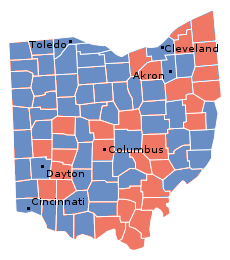
Here is his 4.4% victory eight years later:
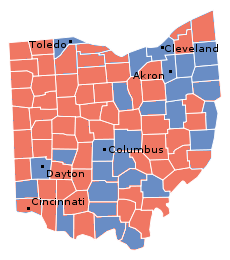
The maps are practically inverses of each other – courtesy of the New Deal.
Democratic Ohio
Today Roosevelt’s coalition remains, for the moment, intact; Democrats still dominate the union vote and northern cities. Because both populations reside along Ohio’s northern and eastern borders, Ohio’s Democratic results often form a blue “7.” The greater the Democratic margin of victory, the “fatter” and more defined the shape becomes.
For example, below the flip is Bill Clinton’s 1996 performance, in which he took the state by 6.4%.
Barack Obama is not a traditional Democrat as understood in Ohio. Unlike Bill Clinton, who was incredibly strong with working class folk, Barack Obama was and is an ill-fit for the Democratic base in Ohio. Nevertheless, because Obama represents what the Democratic Party is rapidly becoming (and because Barack Obama – not Bill Clinton – is our president), an analysis of the 2008 election is more pertinent to the state of affairs in Ohio today.
Obama’s county performance is at the top of this post. Let us look instead at his margins.
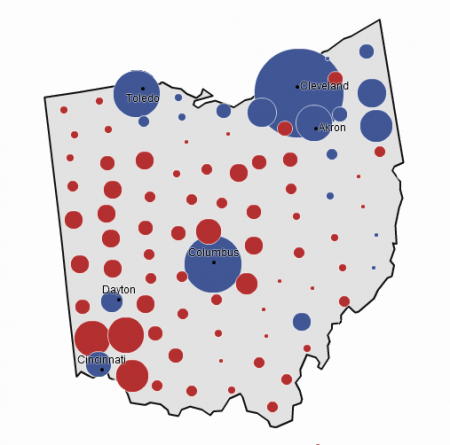
Obama won by assembling a coalition quite different from Clinton’s. He did best in the southern cities of Columbus and Cincinnati, while doing fairly poorly in the east and southeast – places strong Democrats typically win.
Note the importance of industrial northeast Ohio. Democratic votes in Akron and Youngstown (Mahoning County) are vital for countering the Republican tilt of other parts of the state.
Then, of course, there is Cuyahoga County – Cleveland. Both the most populous and most Democratic county in Ohio, it is the foundation of Democratic strength in Ohio. Without Cleveland, Ohio would be convincingly Republican in each and every close presidential election.
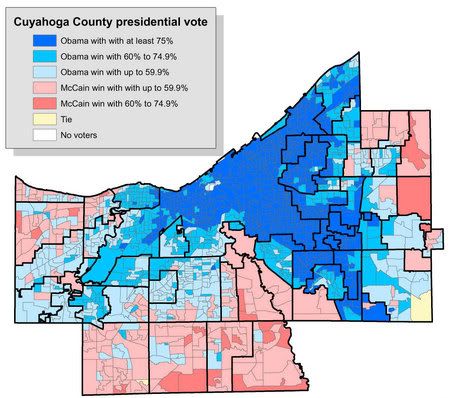
Like many dying Midwestern cities, Cleveland is strongly segregated by race. White flight devastated the city, and it has never really recovered. Cleveland is not a liberal city like Seattle and Manhattan are; it votes Democratic due to the union-workers and African-Americans who live in it.
The same holds true for Ohio’s traditional Democratic base in general. Like much of the state itself, the industrial unionized workers and great northern cities have been declining together for decades. Cleveland has been losing population for five decades now. Toledo and Akron are both shedding population. The plight of Youngstown and its once-great unionized steel industry has continued through Carter and Reagan and Bush and Clinton and now Obama.
The day may soon come when these people become susceptible to Republican appeals on cultural issues, especially as the Democratic Party changes into the natural home of the coastal wealthy. Already a Rust Belt steelworker probably has more in common with a deep-fried Southern conservative than a Seattle environmentalist. If Ohio’s working class has anything in common with next-door West Virginia, they will start voting the same way too – although this has not happened yet.
There is one exception to this, however: the city of Columbus. In many ways Columbus is the opposite of Ohio. It is growing. It is diverse. It is liberal – in every sense and connotation of the word – and is moving swiftly to the Democrats, much like Fairfax County in Virginia.
So there may come a day – unlikely as it now seems – when Democrats anchor their strength not in the union workers in Youngstown and Akron but in Cleveland and Columbus, two opposite cities in every sense.
